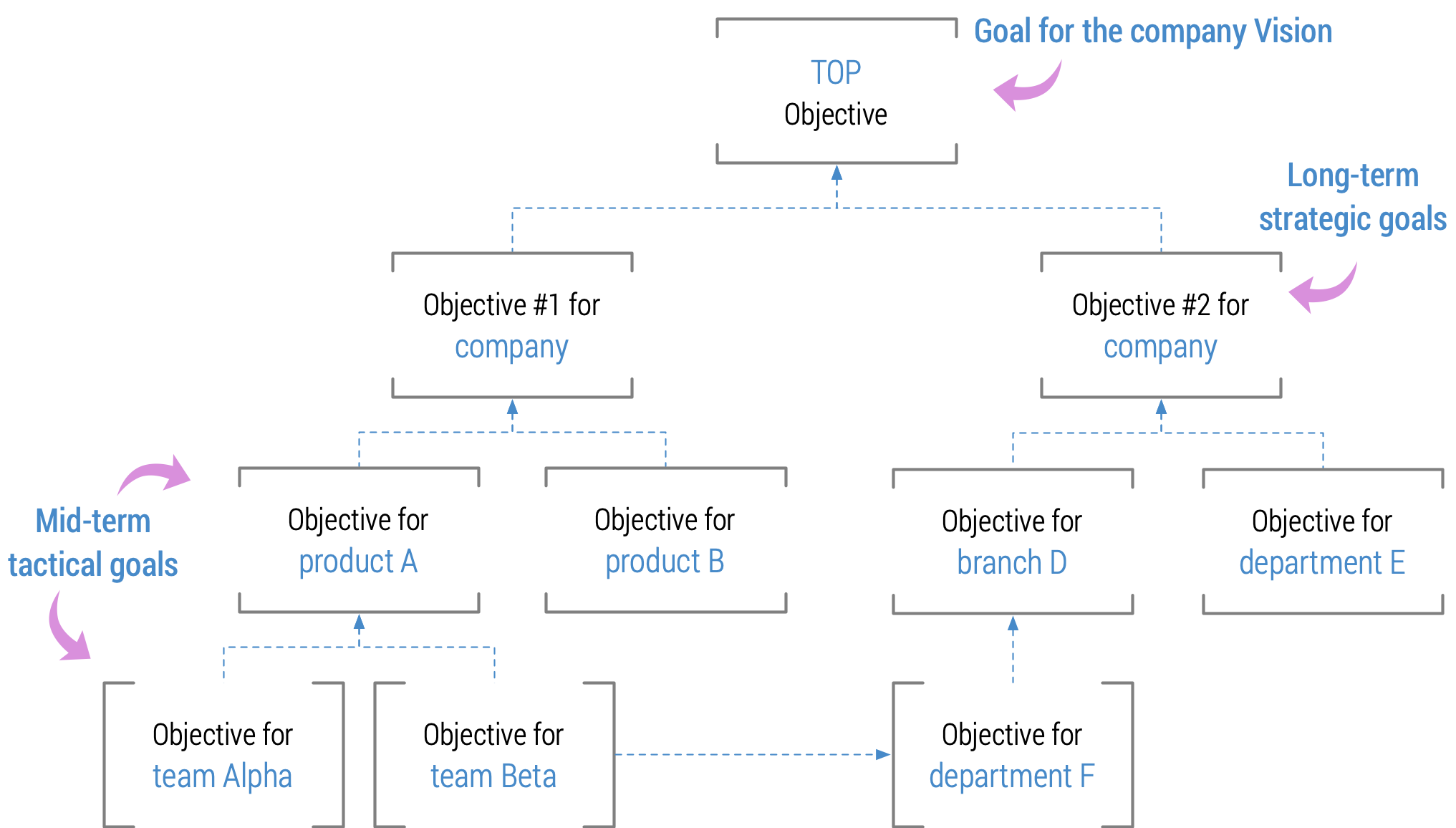There is an important concept to understand about how the Agile Tools OKR platform approaches goal setting on a personal/individual/employee level.
We believe, and field experience also confirms, that more and more organizations are becoming team-oriented, and not so much emphasis is on every individual. This observation is translated to the logic of how OKRs are created.
Agile Tools does not use the term "level" as it sounds and encourages hierarchy, which we want to minimize in modern organizations. Any organization will have management and departmental hierarchy; that is a human cultural fact. Agile Tools uses the term "scope". You can create OKRs for three major scopes: Team (cross-functional), Value Unit (your products, projects, services, etc.), and Organizational Unit (company, sales department, branch, plant, etc.).

Image 1 - The Goals page with configurable scope sections
And here comes the crux of personal involvement in any OKR - every Goal must have an owner, just one. And, every Key Result must have a caretaker (one or two). This concept is where the rubber meets the road - how any individual/employee contributes to shared goals, even company vision.
So, not everybody, all the time. Personal OKRs are a great way to hinder or even completely break your goal-setting journey. And you may not recover for years.
The image below is a summary of all possible scopes of goals we can create on the Agile Tools platform.

Image 2 - Hypothetical relationships of OKRs with different scopes
The OKR initiative team in your company, with the OKR ambassador leading the effort, will have to decide how to structure the goals. The Agile Tools will not limit the available scopes for anyone, talk, and communicate with your teams.